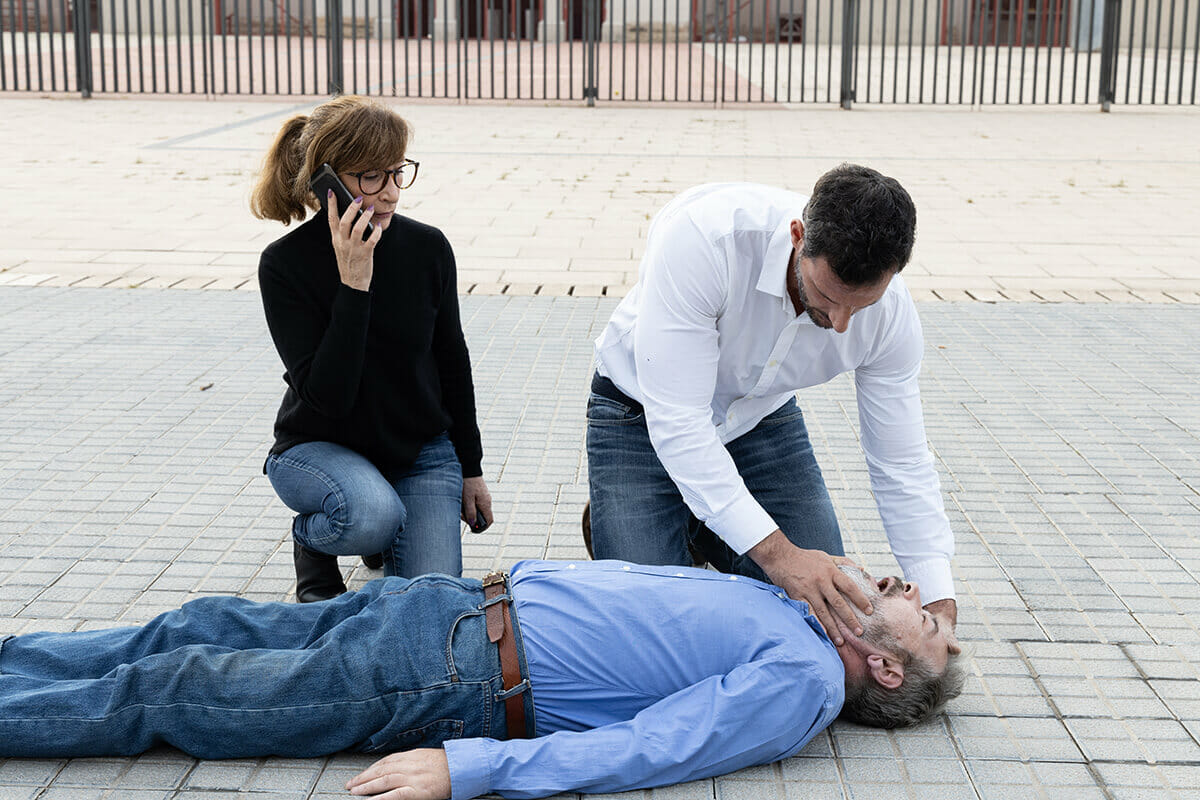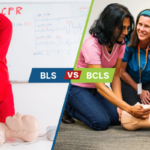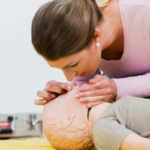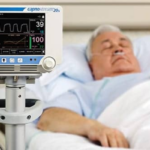
- Last Updated On: March 21, 2024
What Does CPR Do?
CPR, or cardiopulmonary resuscitation, is one of the most important life-saving procedures that you can learn. When a victim undergoes cardiac arrest or their heart stops beating due to another type of medical emergency, the combination of chest compressions and rescue breaths can be the difference between life and death. Since there are over 325,000 adult cardiac arrest deaths in the United States each year, equipping as many people as possible with this skill has never been more important.
This is why learning how to perform CPR and earning your CPR certification has become so popular (and critically important) in recent years. Following a cardiac arrest episode, bystanders can play an important role in ensuring the victim’s survival during the critical minutes before professional medical help arrives. Performing CPR makes a difference. For every minute that passes when a victim doesn’t receive this procedure, their survival rate drops by roughly 7 to 10 percent.
At the American CPR Care Association, we work hard to ensure that people from all different backgrounds have access to the skills and knowledge that can save lives. This commitment to saving lives is our core value and guides us as we provide comprehensive, student-centered, and 100 percent online CPR certification and recertification courses. Our entire catalog of certification courses, including CPR, CPR/AED, and First Aid courses, make it possible for any individual to learn these important, life-saving skills.
In this blog, we take a closer look at CPR and what this life-saving procedure actually does for the victim’s body. We then discuss how to earn your CPR certification 100 percent online and look at the key benefits of choosing this method of learning.
WHY VICTIMS NEED CPR
According to the Mayo Clinic, sudden cardiac arrest is defined as an abrupt loss of consciousness, breathing, and heart function. Cardiac arrest is triggered by an electrical malfunction in the heart that leads to an irregular heartbeat (also known as arrhythmia). This malfunction can stop the heart and prevent it from pumping blood throughout the body. When this occurs, oxygen cannot reach the brain and other vital organs. Within just a few minutes, this lack of oxygen can lead to irreparable damage or even death.
WHAT DOES CPR DO?
Once a victim stops breathing and becomes unresponsive, what does CPR do and how does it help the victim survive? To understand this medical procedure, it’s helpful to examine some of the key steps to see how CPR impacts the victim.
After calling 911, you should first position the victim on their back and open their airway. This can be done by tilting the head back and carefully lifting their chin. Opening the victim’s airway ensures that oxygen can reach their lungs.
Once their airway is open, check for breathing. If you cannot detect a steady breath, begins the steps of CPR: chest compressions and rescue breaths. Chest compressions essentially replicate the beating motion of the heart to help move blood to the arteries and veins. Rescue breaths then provide oxygen directly to the victim.
WHAT DOES AN AED DO?
In addition to performing CPR, AEDs (automated external defibrillators) can also increase the chance of the victims’ survival. An AED is a small medical device designed to reset the victim’s heartbeat. Once attached to the victim’s chest, the AED uses sensors to look for an irregular heart rhythm. If detected, the device emits a small electrical pulse that effectively stops the heart momentarily and allows it to reset itself.
WHEN SHOULD I PERFORM CPR?
Without CPR certification, many bystanders hesitate to perform CPR because they’re not sure if this is the right course of action. With so many different types of medical emergencies, how can you be sure that CPR will be the most effective procedure? And what if CPR causes more harm than good? To help determine whether or not you should perform CPR on a victim, here are some common signs to look for:
- They are completely unresponsive.
- Their heart has stopped beating.
- They are unable to breathe.
- They can only take occasional gasping breaths (often a sign the victim is beginning cardiac arrest).
WHEN WOULD A VICTIM NEED CPR?
CPR is most commonly used on victims of sudden cardiac arrest; however, there are many different medical emergencies where CPR can be beneficial and increase the survival chance of the victim. Here are a few different situations where a bystander may perform CPR:
- Suffocation.
- Poisoning.
- Near-drowning occurrences.
- Electrocution.
- Smoke inhalation.
- Choking.
HOW TO EARN YOUR CPR CERTIFICATION ONLINE
For many individuals in the healthcare field or those who simply want to develop this important skill, online classes are the perfect way to receive your CPR certification or CPR recertification. As digital tools and eLearning classes have improved in recent years, it’s hard to ignore the benefits of this type of learning. In fact, with online classes, you can earn your CPR/AED certification in just three simple steps.
1. Choose your program.
Our list of classes includes CPR certification, CPR/AED certification, First Aid certification, Bloodborne Pathogens certification, and CPR certification courses that are designed specifically for healthcare providers. If you’re earning your certification for professional purposes, it’s important to know exactly which skills (and courses) you’ll need.
2. Complete the course requirements.
After selecting your course, there’s no need to wait before you begin. With online CPR classes, you can start and stop the lessons at any time. This method is ideal for those who are already working full time or with hectic schedules. Complete the course at your own pace and earn your instant certification after completing a final quiz. Some courses may also require a hands-on component.
3. Print off your CPR certificate.
After completing your CPR certification quiz, all you have to do is to pay for the course and print off your CPR certification card. Our courses allow you to instantly download and print your certification card. Many programs will even then mail a print copy to your home.
CONCLUSION – WHAT DOES CPR DO?
We can all do our part to help combat the public health crisis of lives lost to cardiac arrest. According to the American Heart Association, over 350,000 cardiac arrest episodes occur outside of a hospital each year. What does this mean? Without the immediate response of medical professionals, the actions of a bystander become critically important.
By learning how CPR works, you can become more confident in emergencies that require CPR. Through a combination of chest compressions and rescue breaths (or, in some cases, just chest compressions), a bystander can keep the heart pumping and circulate oxygen-rich blood throughout the body. This action can keep a victim stable until professional medical help arrives on the scene.
To help you safely and effectively respond to a wide range of medical emergencies, sign up for online CPR certification classes today. With our OSHA trained professionals and 100 percent online course design, it’s easier than ever before to gain these important life-saving skills. Taking our online CPR/AED certification course can ensure that you’re ready to offer assistance in a medical emergency.
For more information on learning the steps of CPR and what these classes include, check out the
American CPR Care Association blog or reach out to us via our contact page. We look forward to helping you learn more about CPR, how it works, and why it’s such a critical, and life-saving, skill for everyone to master.






